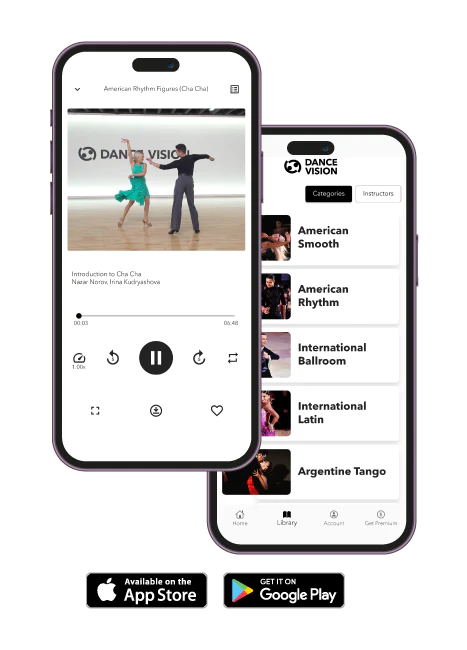Breakdancing, commonly referred to as breaking, had its beginnings in the Bronx borough of New York City during the early 1970s, its roots deeply intertwined with the burgeoning hip-hop culture of the era.
Origins
Several key factors contributed to the development and popularization of breakdancing. Here are some key points about its origins:
1. Street Culture and Urban Environment
During the 1970s, the South Bronx, notably marginalized and economically disadvantaged, faced widespread poverty, racial segregation, and urban decay. In the midst of these hardships, youth in the neighborhood sought creative forms of expression..png?width=1830&height=1029&name=Screenshot%20(454).png)
2. Block Parties and DJ Culture
DJ Kool Herc, a pioneering figure in hip-hop music, gained renown for his parties in the Bronx, where he popularized the technique of "breaking" - extending instrumental breaks in funk and soul tracks. These block parties became breeding grounds for the nascent hip-hop culture, with breaking playing a central role in its emergence..png?width=1656&height=932&name=Screenshot%20(448).png)
3. Influence of Martial Arts and Gymnastics
Breakdancing drew influence from diverse movement styles like martial arts and gymnastics, integrating spins, flips, and intricate footwork into its routines. This fusion resulted in the distinctive and acrobatic flair characteristic of breakdancing..png?width=1576&height=887&name=Screenshot%20(522).png)
4. Competition and Innovation
In the competitive side of breakdancing, dancers vie in battles to showcase their skills. These events, often in circles or cyphers, provide a stage for demonstrating expertise in footwork, freezes, power moves, and improvisation. Dancers persistently explore novel moves and techniques, pushing the dance's boundaries. .png?width=1920&height=1080&name=Screenshot%20(532).png)
5. Media Exposure and Globalization
Breakdancing garnered broad recognition outside the Bronx via media platforms such as films, music videos, and TV shows during the late 1970s and early 1980s. Productions like "Wild Style" and "Beat Street" played central roles in introducing breakdancing to global audiences, facilitating its widespread dissemination and impact..png?width=1827&height=1028&name=Screenshot%20(542).png)
Elements of Break Dancing
Here are the elements of breakdancing listed:
1. Toprock
Toprock initiates routines, establishing rhythm and style. It involves a range of steps, shuffles, and gestures using the upper body, arms, and legs. Dancers utilize this phase to engage with music, connect with the audience, and segue into more intricate moves.
2. Downrock
Downrock involves intricate footwork performed close to the ground. It contrasts with toprock, as dancers execute movements such as spins, sweeps, and floor patterns utilizing hands, feet, and knees. Downrock serves to showcase agility, control, and creativity, often serving as a bridge to power moves or freezes in a breakdancing routine.
3. Power Moves
Power moves are dynamic and acrobatic maneuvers in breakdancing, featuring spins, flips, and rotations that showcase the dancer's athleticism. Executed on the hands, head, or back, they highlight the dancer's ability to generate momentum and control their body's movements. These moves add excitement and intensity to performances, requiring significant practice and conditioning, demonstrating breakdancers' dedication to their craft.
4. Freezes
Freezes in breakdancing are dramatic poses that momentarily halt movement, showcasing balance and control. Dancers strike these poses with various body parts, adding artistic flair to performances. They require precise timing and strength.
Cultural Impact
As a cornerstone of hip-hop culture, breakdancing has wielded a profound cultural impact since its emergence in the 1970s. Beyond its status as a dance form, breakdancing has served as a powerful vehicle for social expression and community building. It provided a creative outlet for marginalized urban youth, offering them a platform to channel their energy and talents into positive endeavors. Breakdancing fostered a sense of belonging and identity among its practitioners through its dynamic movements and electrifying performances. Moreover, breakdancing's global proliferation facilitated cultural exchange and collaboration, transcending geographical boundaries to unite individuals from diverse backgrounds under a common passion.
Evolution and Contemporary Scene
Breakdancing has undergone a remarkable evolution, transitioning from its foundational steps to incorporate daring acrobatics and intricate footwork. Its rise to mainstream prominence surged during the 1980s and 1990s, fueled by cinematic portrayals and competitive showcases. Breakdancing has continued to evolve, seamlessly integrating influences from a myriad of dance styles and embracing the advancements of modern technology. In today's world, breakdancing is thriving by mixing old and new styles effortlessly. Prestigious competitions like Red Bull BC One provide platforms to showcase the world's top talent, while collaborative ventures with various art forms and digital platforms expand its influence and accessibility. Through its dynamic presence, breakdancing remains a vibrant and inclusive force, captivating and inspiring new generations of enthusiasts worldwide.
Conclusion
In conclusion, breakdancing serves as more than just a dance form; it's a cultural phenomenon that unites people across the globe. Its dynamic movements, deeply rooted in hip-hop culture, continue to captivate audiences. From its humble beginnings in the Bronx to its widespread popularity today, breakdancing embodies resilience, innovation, and the power of artistic expression.
For further insights into breakdancing and related dance forms, explore our blog post—What is Hip-hop Dance?

